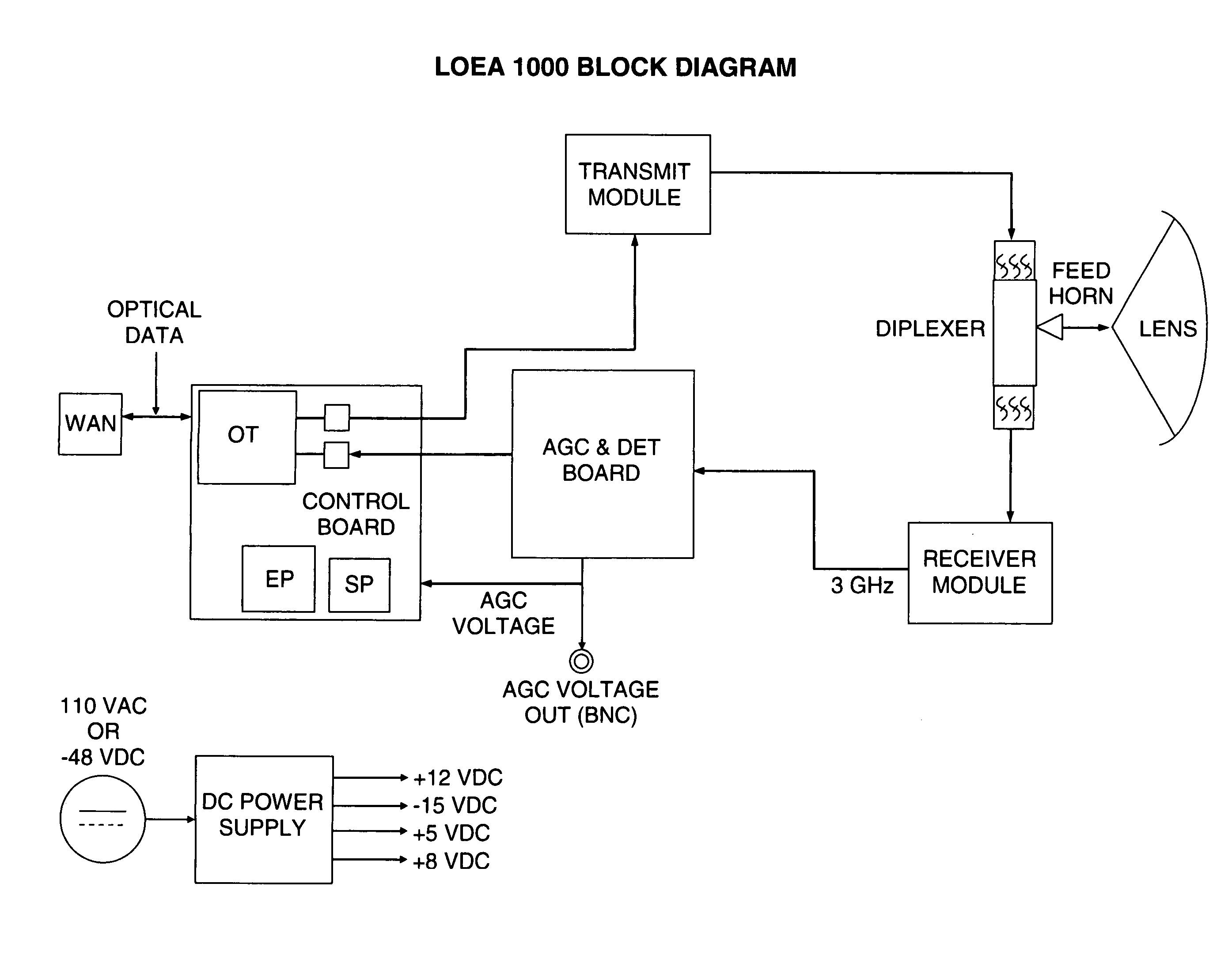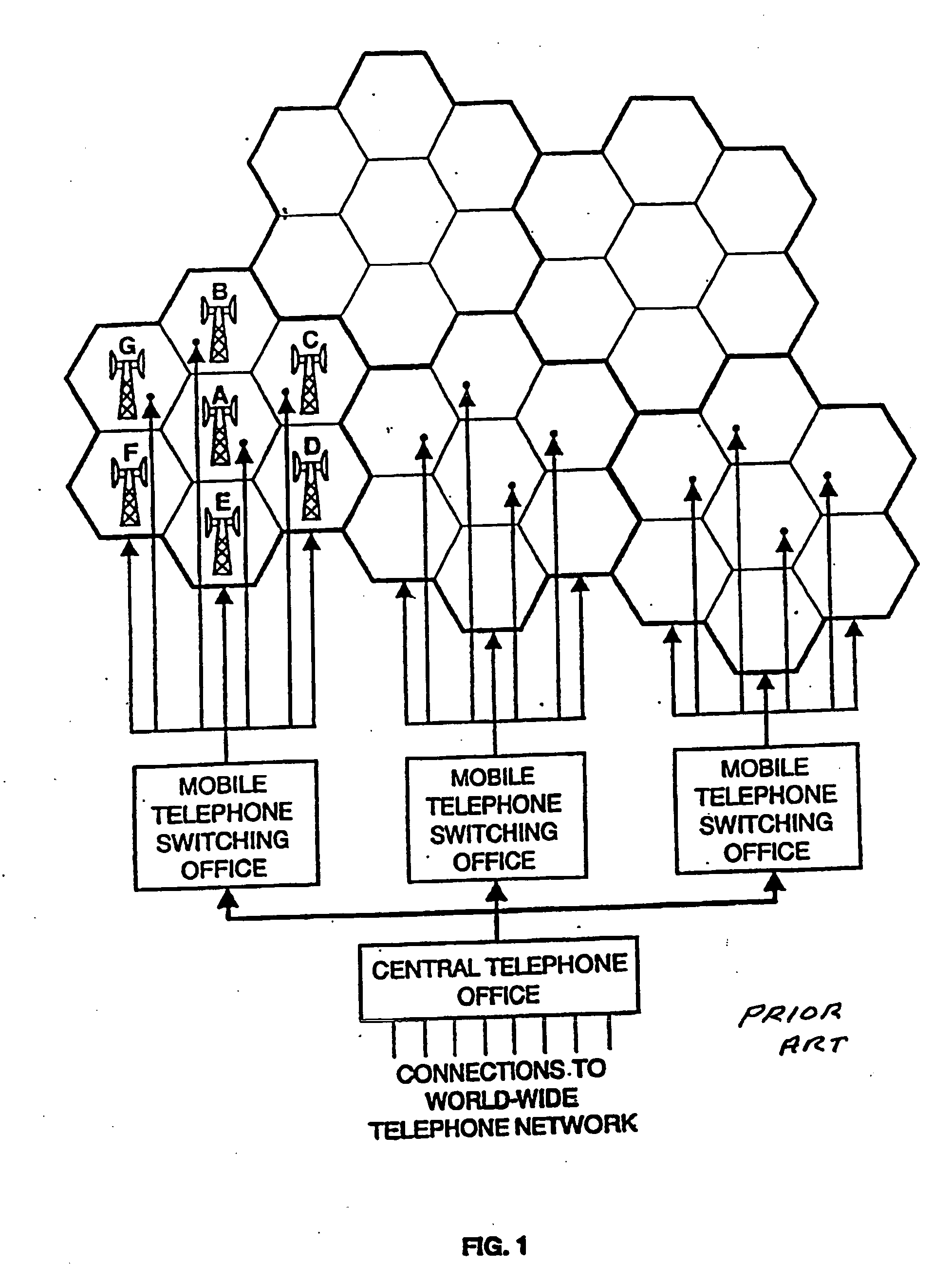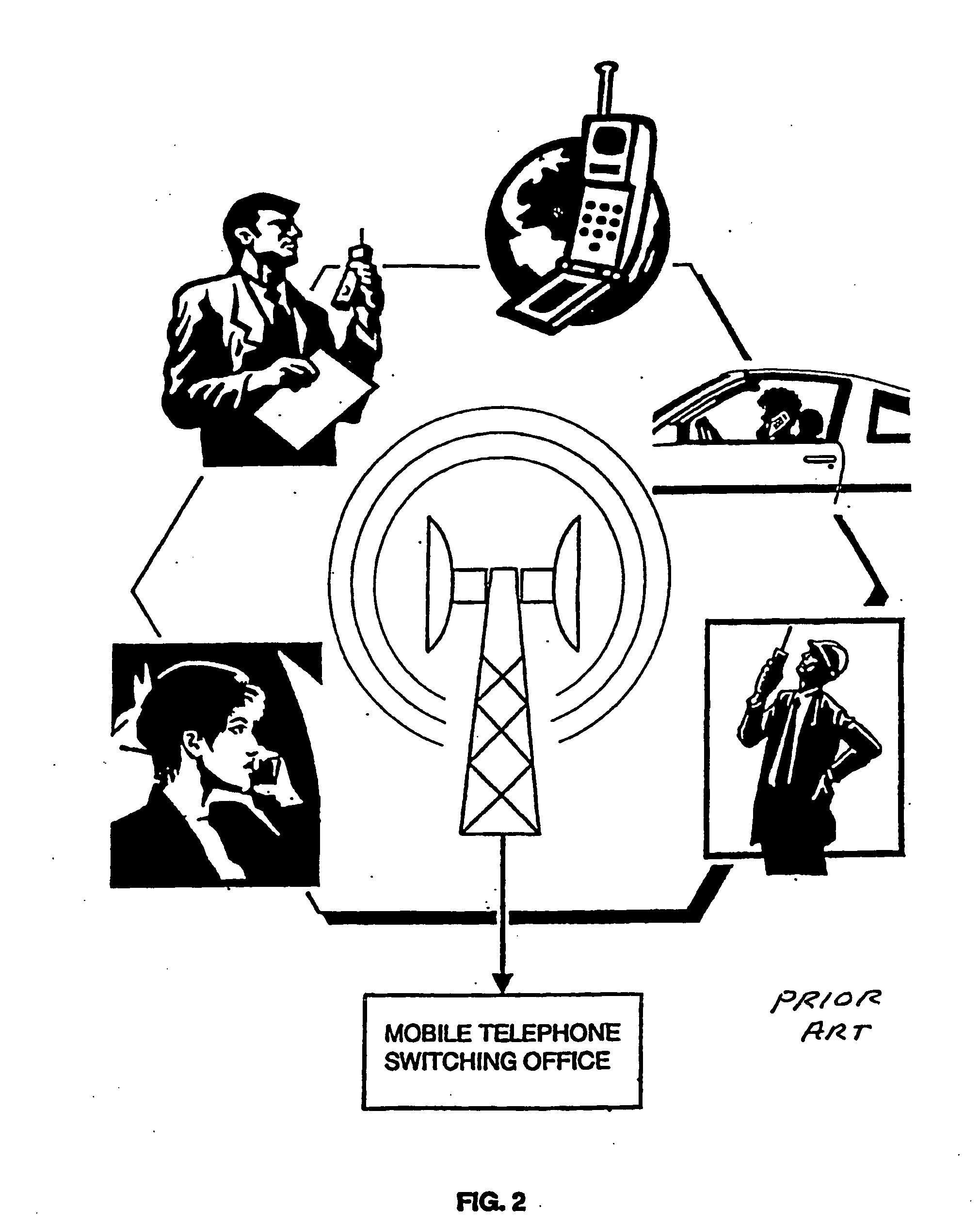Wireless millimeter wave communication system
a communication system and millimeter wave technology, applied in the direction of repeater circuits, line-transmission details, transmission monitoring, etc., can solve the problems of not justifying the design and construction of fiber optic trunk lines can often take many months, and the cost of fiber optic trunk lines is high, so as to minimize the size of the transceiver, minimize the adverse effect of tower sway, and maximize the beam divergence
- Summary
- Abstract
- Description
- Claims
- Application Information
AI Technical Summary
Benefits of technology
Problems solved by technology
Method used
Image
Examples
Embodiment Construction
E-Band Millimeter Wave Communication
[0046]United States Federal Communication Commission (FCC) regulations define a minimum 3 dB divergence angle of 1.2 degrees, a minimum antenna gain of G=43 dBi, side lobe reduction between 1.2 degrees and 5 degrees of G-28, and side lobe reduction of 35 dB between 5 and 10 degrees off axis. (There are further side lobe reduction requirements at larger angles).
Lens-Based Transceiver
[0047]Drawings of two lens-based transceivers are shown at 12 and 14 in FIGS. 8A and 8B. Components include cylindrical housing 42, lens 31, feed horn 30, transmit electronics 24A, receive electronics 24B, diplexer unit 28, interface electronics module 32, Ethernet or fiber optics input-output 34, mount unit 40, azimuth adjustment 38 and elevation adjustment 36. Outgoing beam is shown at 13 and incoming beam is shown at 15 and the beam width is indicated at 23. Two prospective views of the transceiver showing these components are provided in FIGS. 9A and 9B. FIG. 10 des...
PUM
 Login to View More
Login to View More Abstract
Description
Claims
Application Information
 Login to View More
Login to View More - R&D
- Intellectual Property
- Life Sciences
- Materials
- Tech Scout
- Unparalleled Data Quality
- Higher Quality Content
- 60% Fewer Hallucinations
Browse by: Latest US Patents, China's latest patents, Technical Efficacy Thesaurus, Application Domain, Technology Topic, Popular Technical Reports.
© 2025 PatSnap. All rights reserved.Legal|Privacy policy|Modern Slavery Act Transparency Statement|Sitemap|About US| Contact US: help@patsnap.com



